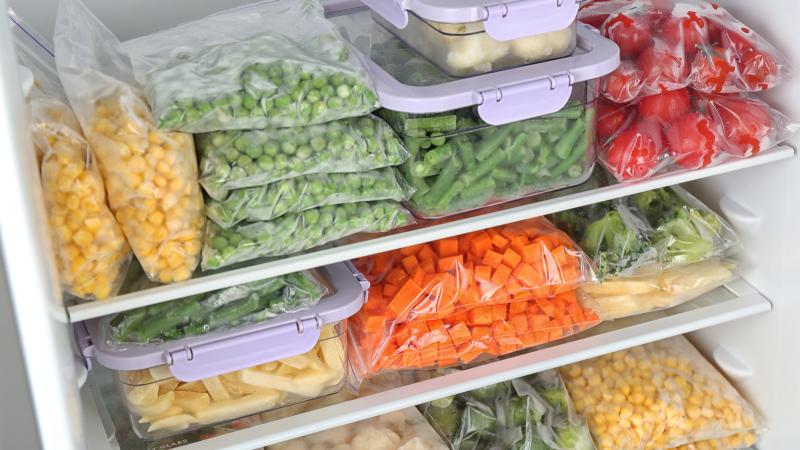Frozen Food Market Will Grow at Highest Pace Owing to Convenience For On-The-Go Lifestyle
Frozen foods are ready-to-cook or ready-to-eat food items that are stored and distributed in a frozen state. They offer numerous advantages such as longer shelf life, reduced waste, and convenience for an on-the-go lifestyle. The increase in women workforce participation and changing demographics towards smaller household sizes have augmented the demand for frozen food that can be quickly prepared with minimum effort and cooking skills. The Global Frozen Food Market is estimated to be valued at US$ 167116.37 Mn in 2024 and is expected to exhibit a CAGR of 4.8% over the forecast period 2023 to 2030.
Key Takeaways
Key players operating in the frozen food are Nestle S.A., Ajinomoto Co., Inc., Kraft Foods Group, Inc., ConAgra Foods, Inc., General Mills, Inc., H.J. Heinz Company, Tyson Foods, Inc., Unilever Plc., Maple Leaf Foods, Inc., and Pinnacle Foods, Inc. These players are focusing on new product launches, mergers, acquisitions, and expansions to gain a competitive advantage in the market.
The rising demand for convenience food amid changing consumer habits has been driving the frozen food market. With increasing number of people leading busy lifestyles, there is growing preference for ready-to-eat meals that can be prepared quickly. Moreover, changing demographics such as younger population and increasing number of women in workforce have boosted the demand for frozen food.
Technological advancements are aiding the frozen food market growth. Improved freezing technologies allow for faster freezing which enhances the food quality and texture after thawing. Development of modified atmosphere packaging prevents freezer burn and moisture loss. Companies are innovating with vegan and protein-rich frozen products to cater to the dietary preferences of health-conscious consumers.
Market Trends
Rising popularity of private label brands: Major retailers are launching their own private label brands of frozen food including frozen pizza, snacks, vegetables etc. to cash in on the growing demand. This offers value-priced option to customers and accelerates market competition.
Increasing adoption of clean label ingredients: Manufacturers are responding to consumer demand for transparency by decreasing number of artificial ingredients and substituting them with cleaner, easy-to-understand ingredients. They are also leveraging buzzwords like “natural”, “organic” to market their products.
Market Opportunities
Expanded availability through e-commerce platforms: Evolving cold chain logistics and partnerships between frozen food companies and aggregators/retailers provide opportunities to expand the addressable market through e-commerce platforms for online ordering and delivery.
Growing demand for plant-based and vegan options: Popularity of vegan/flexitarian diets and health concerns related to red meat present lucrative prospects for plant-based meat analogs, seafood alternatives, veggie snacks etc. Companies are innovating to provide sustainable and healthy options.
Impact of COVID-19 on Frozen Food Market Growth
The COVID-19 pandemic had a significant impact on the frozen food market. During the initial phases of the pandemic in 2020, the demand for frozen food products increased significantly as consumers stockpiled essential items. However, with the imposition of lockdowns and restrictions on dining out, the foodservice segment witnessed a major decline which impacted the overall frozen food market growth. As restaurants, cafes, and other food outlets shut down temporarily, the sales of frozen meals, appetizers, snacks declined sharply. The supply chain was also disrupted during this period which posed challenges for manufacturers.
However, as people were confined to their homes, the retail frozen food segment experienced increased demand. Consumers purchased more frozen vegetables, fruits, meat, seafood, baked goods to prepare meals at home. Brands launched innovative ready-to-cook and ready-to-eat options to cater to the rising home consumption. Online grocery shopping and delivery also gained prominence boosting frozen food sales. In the post-COVID period, while the foodservice segment is recovering gradually, the trend of in-home consumption is expected to persist, supporting steady demand for retail frozen products. Manufacturers will need to focus on product innovation, enhancing packaging safety and providing nutritional options to attract health-conscious consumers in the coming years.
Europe remains the largest market for frozen food in terms of value owing to high per capita consumption and thriving food processing industry in countries like Germany, France and UK. Within Europe, Western Europe accounts for the majority market share led by countries like Germany, UK, France, Spain and Italy. Changing lifestyles, bust urbanization and increased purchasing power are fueling growth of the frozen food sector in Europe.
The frozen food market in Asia Pacific region is forecast to witness the fastest growth during the projected period. Factors such as rapidly rising incomes, expansion of modern retail channels, growing working women population and increasing health awareness are driving demand for convenient frozen snacks and meals in countries like India, China, Indonesia and Vietnam. China currently dominates the APAC frozen food landscape and its market is expected to surge at an impressive pace through 2030.
